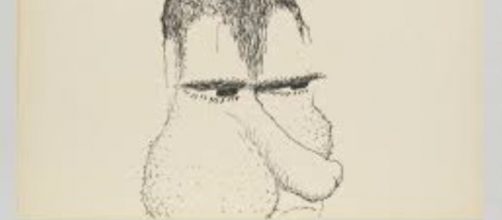The 57th Venice Biennale is showing a retrospective of U.S. painter Philip Guston’s body of work. While best known for his Abstract Expressionist work, this display also includes a series of scathing cartoons drawn during the ‘70s in reaction to Richard Nixon’s abuses of power. Clearly upset, Guston turned from his signature paintings to pen and ink illustrations to ridiculed the president.
Mad as hell
In several exhibit examples, he played on Nixon’s nickname of Dick and gave him a phallic-shaped nose and testicle-shaped cheeks. He explained his anger to the press in 1977 this way: “What kind of man am I, sitting at home, reading magazines, going into a frustrated fury about everything – and then going into my studio to adjust a red to a blue?”
Pointing a finger
Art history makes evident that the politics of the world have often driven painters to put aside their brushes and make drawings lambasting those in power in their times who get it wrong.
Hans Holbein the Younger, Renaissance German artist famed for painting King Henry VIII and other Tudors, laced into the Pope and the Catholic clergy during the Reformation with a hard-hitting series titled “Dance of Death.
Truth to power
William Hogarth, 18th-century English painter, known for life-size portraits and history paintings, spoofed the waywardness of the ruling class, like their marriages of convenience, in the series “Marriage a la Mode.”
Francisco Goya, celebrated court painter to the Spanish crown in the 19th century, satirized its foibles in his cartoons called Caprichos (Caprices). And despite the record number of paintings (500) and sculptures (100), 19th-century French artist Honore Daumier, took time out from his art-making to mock the political and societal foibles of his day with a series called “La Caricature,” including a depiction of the king as “gargantuan.”
The big picture
American painter Jack Levine went the distance and made societal and political ills the entire subject of his life’s work.
When he saw corruption, it became the theme even of his paintings, exemplified by a canvas made in the Great Depression that savaged political power in Boston.
Called “Feast of Pure Reason,” he described three overweight leaders as the pictorial definition of “fat cats.” As noted in a Whitney Museum art show catalog in 1955, “You can’t disregard the whole world for some silly paint spots...before anything I have to find out the valid thing to do as an artist and as a man.”
Saying it in French
Picasso, famed for co-inventing Cubism and collage, talked like Guston and Levine when he said in "Lettres Francaises” in 1945, “What do you think an artist is, an imbecile who has only his eyes?” Answering his own question, he said that the artist is a political being sensitive to all events around him.
“Painting is not done to decorate apartments. It’s an instrument of war for attack or defense against the enemy.” Making the point is his anti-war work “Guernica.” This column looks forward to seeing what painters in our time do to mock the Trump presidency.


